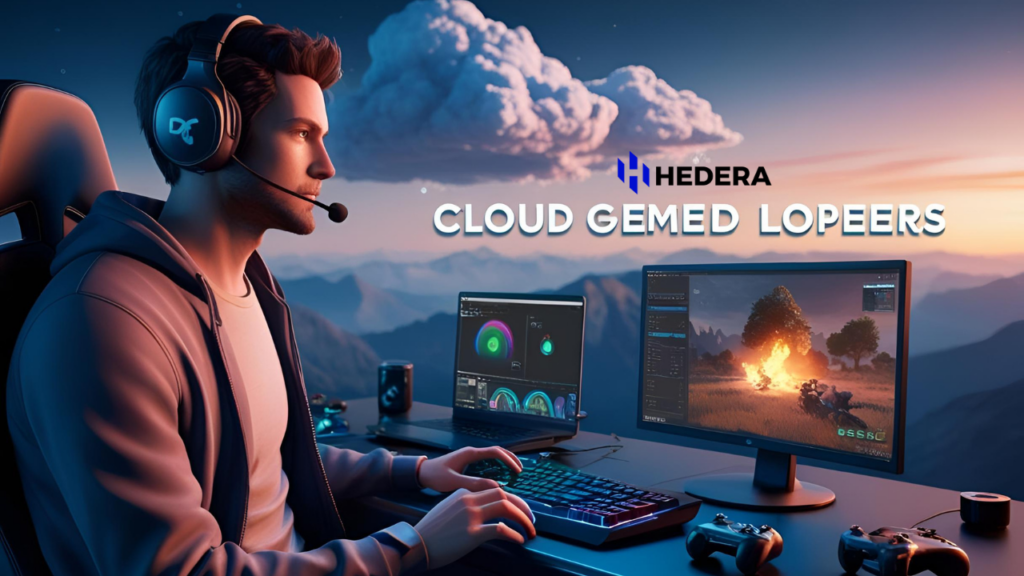5 Ways Cloud Rendering Saves Time and Money for Game Developers
Cloud rendering has revolutionized the way game developers approach the rendering process, providing significant advantages in terms of time efficiency and cost reduction. This article explores five key ways cloud rendering benefits game developers, making it an essential tool in modern game development.
1. Enhanced Rendering Speed
One of the most significant advantages of cloud rendering is its ability to dramatically increase rendering speed. Traditional local rendering can be time-consuming, especially for complex 3D models and high-resolution graphics. Cloud rendering leverages distributed computing power, allowing multiple servers to work on rendering tasks simultaneously. This parallel processing significantly reduces the time required to complete rendering jobs.
Batch Rendering: Cloud services can handle multiple rendering tasks at once, enabling developers to submit several files for rendering simultaneously. This is particularly beneficial during peak development phases when time is critical.
Reduced Idle Time: By offloading the rendering workload to the cloud, developers can continue working on other aspects of their projects without waiting for local machines to finish rendering tasks. This leads to a more streamlined workflow and improved productivity.
2. Cost Efficiency
Cloud rendering provides a cost-effective solution for game developers by eliminating the need for expensive hardware investments. Setting up a local render farm requires significant upfront costs for high-performance servers and ongoing maintenance expenses. In contrast, cloud rendering operates on a pay-as-you-go model, which means developers only pay for the resources they use.
Lower Hardware Costs: By utilizing cloud services, developers can avoid the hefty price tags associated with purchasing and maintaining high-end hardware. This is especially advantageous for small studios and indie developers who may have limited budgets.
Scalability: Cloud platforms allow developers to scale their resources based on project needs. During periods of high demand, such as game launches or updates, developers can easily increase their computing power without having to invest in additional physical hardware.
3. Improved Collaboration and Accessibility
Cloud rendering enhances collaboration among team members by providing a centralized platform where assets can be shared and accessed from anywhere in the world. This flexibility is crucial in today’s globalized work environment, where teams often consist of members from different locations.
Real-Time Collaboration: Developers can work together in real-time on projects, sharing files and feedback instantly. This fosters creativity and innovation as team members can contribute their ideas without geographical constraints.
Remote Access: Cloud-based solutions enable developers to access their projects from any device with an internet connection. This means that even if a developer is away from their primary workstation, they can still monitor progress, make adjustments, and communicate with their team.
4. Enhanced Security and Backup Solutions
Data security is a top priority for game developers, especially when it comes to protecting intellectual property and sensitive information. Cloud rendering services typically offer robust security measures that are often more sophisticated than what individual studios can implement on their own.
Data Encryption: Most cloud services provide encryption for data both in transit and at rest, ensuring that sensitive information is protected from unauthorized access.
Regular Backups: Cloud platforms often include automated backup solutions that protect against data loss due to hardware failures or other unforeseen circumstances. This means that game assets are securely stored and can be recovered quickly if needed.
5. Continuous Availability and Support
Cloud rendering services are designed to be available 24/7, providing continuous access to resources and support whenever needed. This reliability is crucial for game developers who often work under tight deadlines.
Always-On Services: Developers can submit jobs at any time without worrying about local machine limitations or downtime. This ensures that projects remain on schedule, even during off-hours or weekends.
Customer Support: Many cloud rendering providers offer round-the-clock customer support to assist with any issues that may arise during the rendering process. This ensures that help is always available when needed, minimizing potential disruptions to workflow.
In conclusion, cloud rendering offers numerous benefits that save time and money for game developers. By enhancing rendering speed, providing cost-efficient solutions, improving collaboration, ensuring data security, and offering continuous availability, cloud rendering has become an indispensable tool in modern game development workflows. As technology continues to advance, leveraging cloud solutions will likely become even more critical for staying competitive in the fast-paced gaming industry.
6. Flexibility in Resource Allocation
Cloud rendering provides unparalleled flexibility in resource allocation, allowing game developers to tailor their computing power according to specific project requirements. This adaptability is particularly beneficial for projects with fluctuating demands, enabling developers to optimize their rendering processes efficiently.
Dynamic Resource Scaling
On-Demand Resources: Cloud rendering platforms allow developers to scale resources up or down based on current needs. For example, during the initial stages of a project, a developer may only require minimal resources. However, as the project progresses and rendering demands increase, they can easily allocate more power without any physical limitations.
Cost Management: By adjusting resource allocation dynamically, developers can manage costs effectively. They can avoid over-provisioning resources, which leads to unnecessary expenses, and instead pay only for what they use during peak rendering times.
Specialized Rendering Options
Tailored Solutions: Different projects may require different rendering techniques (e.g., ray tracing, rasterization). Cloud rendering providers often offer specialized rendering options that can be selected based on the specific needs of a game, ensuring optimal performance and quality.
Access to Latest Technologies: Cloud services frequently update their hardware and software offerings. Developers can take advantage of the latest technologies without needing to invest in new equipment themselves. This access ensures that they remain at the forefront of rendering capabilities.
7. Streamlined Workflow Integration
Integrating cloud rendering into existing workflows can significantly streamline the game development process. Many cloud services offer compatibility with popular game engines and software tools, which simplifies the transition and enhances productivity.
Seamless Integration with Game Engines
Compatibility with Industry Standards: Leading cloud rendering platforms are designed to work seamlessly with popular game engines such as Unity and Unreal Engine. This compatibility allows developers to integrate cloud rendering directly into their existing workflows without significant adjustments.
Automated Processes: Many cloud rendering services offer automation features that allow developers to set up rendering jobs with minimal manual intervention. This automation can include scheduling tasks, managing asset uploads, and even generating reports on rendering progress.
Version Control and Asset Management
Centralized Asset Management: Cloud platforms often include tools for version control and asset management, allowing teams to keep track of changes made to assets throughout the development process. This feature is essential for maintaining organization and ensuring that all team members are working with the most up-to-date files.
Collaboration Tools: Integrated collaboration tools within cloud services enable team members to comment on assets, share feedback, and make adjustments in real time. This fosters a more cohesive development environment and encourages teamwork.

8. Environmental Impact Considerations
As the gaming industry grows, so does its environmental impact. Cloud rendering can contribute to more sustainable practices by optimizing energy consumption and reducing carbon footprints associated with traditional rendering methods.
Energy Efficiency of Data Centers
Optimized Energy Use: Leading cloud providers invest in energy-efficient data centers that utilize advanced cooling systems and renewable energy sources. By leveraging these resources, game developers can reduce their environmental impact compared to running local render farms that may not prioritize energy efficiency.
Shared Resources: Cloud rendering allows multiple users to share computing resources effectively. This shared model reduces overall energy consumption compared to individual studios maintaining their own hardware.
Sustainability Initiatives
Commitment to Green Practices: Many cloud service providers are committed to sustainability initiatives, such as carbon offset programs and investments in renewable energy projects. By choosing cloud rendering solutions from these providers, game developers can align their practices with environmentally responsible standards.
9. Faster Iteration Cycles
In the fast-paced world of game development, rapid iteration is crucial for refining gameplay mechanics, graphics, and overall user experience. Cloud rendering facilitates faster iteration cycles by enabling quicker feedback loops between development teams.
Immediate Feedback on Visuals
Quick Turnaround Times: With cloud rendering’s enhanced speed capabilities, developers can receive rendered visuals much faster than traditional methods. This immediacy allows teams to assess graphics quality and make necessary adjustments without significant delays.
Prototyping and Testing: Developers can quickly prototype new ideas or features by utilizing cloud rendering for testing purposes. This rapid testing capability encourages experimentation and innovation within the development process.
Continuous Improvement
Iterative Development Approach: The ability to render assets quickly supports an iterative development approach where teams continuously refine their work based on feedback from playtests or stakeholder reviews. This leads to higher-quality final products that better meet player expectations.
10. Future-Proofing Game Development
As technology continues to evolve at a rapid pace, game developers must stay ahead of industry trends to remain competitive. Cloud rendering not only addresses current challenges but also positions studios for future advancements in gaming technology.
Adaptation to Emerging Technologies
Support for New Rendering Techniques: As new rendering techniques emerge (e.g., real-time ray tracing), cloud providers often update their offerings to support these advancements. Developers using cloud services can quickly adopt cutting-edge technologies without needing extensive hardware upgrades.
Integration with AI and Machine Learning: The integration of AI and machine learning into game development is becoming increasingly prevalent. Cloud platforms are well-positioned to leverage these technologies for tasks such as procedural content generation or enhancing graphics quality through AI-driven algorithms.
Long-Term Viability
Sustained Innovation: By adopting cloud rendering solutions now, game developers position themselves for sustained innovation in the future. As gaming technology continues to advance, those utilizing flexible cloud solutions will be better equipped to adapt and thrive in an ever-changing landscape.
Conclusion
In summary, cloud rendering offers a multitude of benefits that save time and money for game developers while enhancing overall productivity and creativity in the development process. From improved speed and cost efficiency to enhanced collaboration and security measures, the advantages of cloud rendering are clear.
As the gaming industry continues to evolve, embracing cloud-based solutions will be essential for staying competitive in an increasingly demanding market. By leveraging the power of cloud rendering, developers can focus on what truly matters—creating engaging experiences that captivate players around the world.
By understanding these key advantages—enhanced speed, cost efficiency, improved collaboration, robust security measures, flexibility in resource allocation, streamlined workflow integration, environmental considerations, faster iteration cycles, future-proofing capabilities—developers will be better positioned to harness the full potential of cloud rendering technology in their projects.
The future of game development is bright with cloud rendering at its core; it’s time for studios of all sizes to embrace this transformative technology and unlock new possibilities for creativity and innovation in gaming!




